presentations
The Instruction: How to Place Much Text in a Slide
Did you hear the main rule of science about presentation: "One slide – one thought"? In this article we shall tell you, when and how one may break it.
Slides with one thought allow to keep attention of the audience on what you are going to tell them. But there are situations when it's necessary to place much immediate information in one slide.
For example, to reveal several properties of one essence or to compare one sentence with another one. In the article we'll tell you how to break the rule "one slide – one thought".
For example, to reveal several properties of one essence or to compare one sentence with another one. In the article we'll tell you how to break the rule "one slide – one thought".
Right now: you must not do the following:

Why is it Bad?
- The slide does not help comprehension, but interferes with it: the audience won't hear the main idea. Imagine, you're telling the listeners, what for one may use a metaphor in speech. When the spectators see that sheet of the text, they will be either distracted or will be reading. Both in this and in that case everybody will stop listening to you.
- That slide takes your listeners as hostages.They have no choice; to understand what the slide is about, it's necessary to read it on the whole.
- If you feel like you are going to forget the information you want to say, use a proper structure — it will help.
How to Correct?
Step 1:
Divide the passages with the blank line
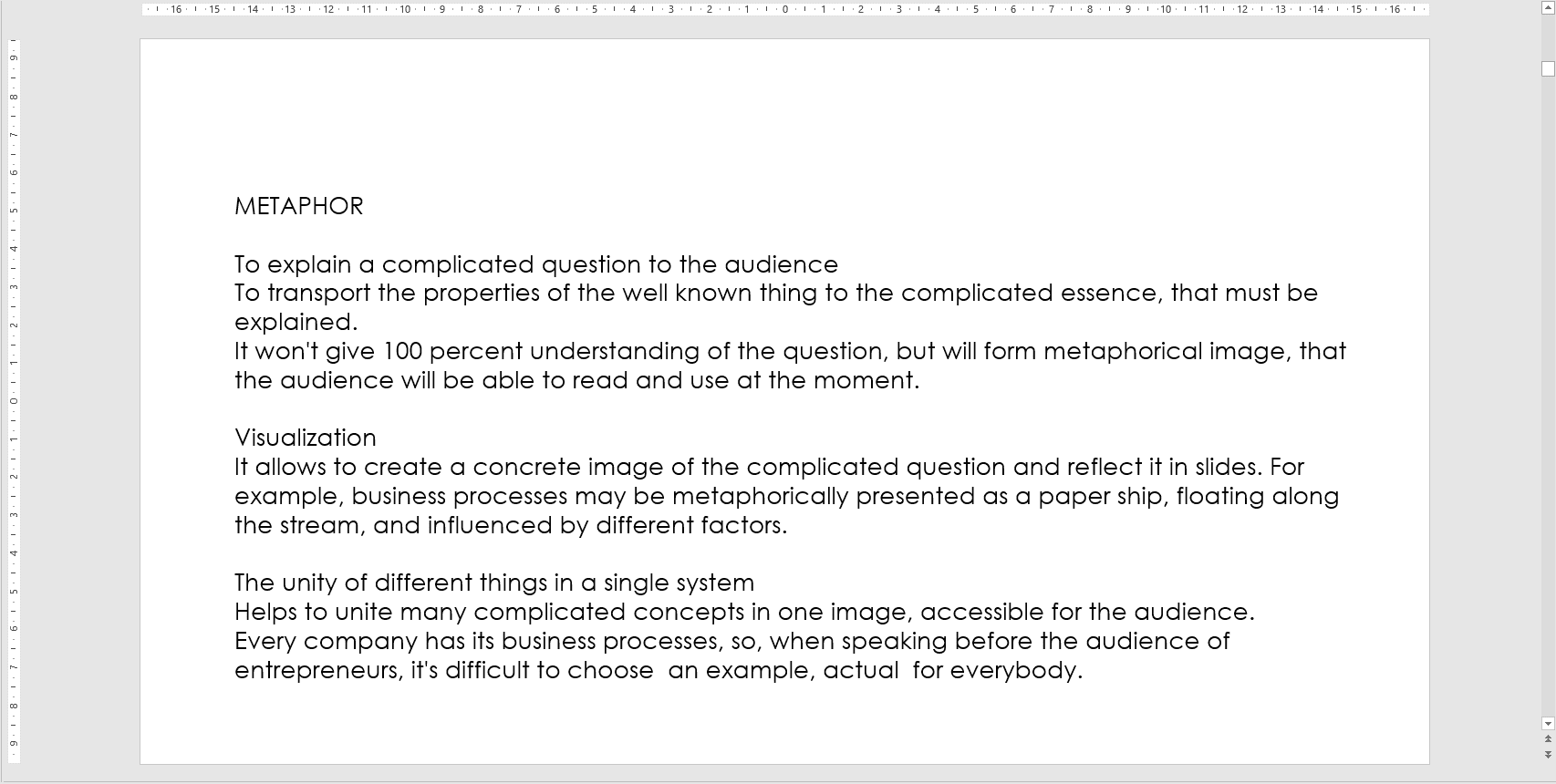
Step 2:
The title must be understandable
The title "Metaphor" is just a nominal headline. It does not reveal the main thought, so to comprehend the information is more difficult. Ask yourself: “What is the main idea of this slide?”. The answer is in the title.
You needn't lure a person to read the text. You needn't clickbait titles of the type:"Only the product will help you to lose weight by 8 kg in a week and this product ...". Your audience is here already and they are listening to you.
You needn't lure a person to read the text. You needn't clickbait titles of the type:"Only the product will help you to lose weight by 8 kg in a week and this product ...". Your audience is here already and they are listening to you.
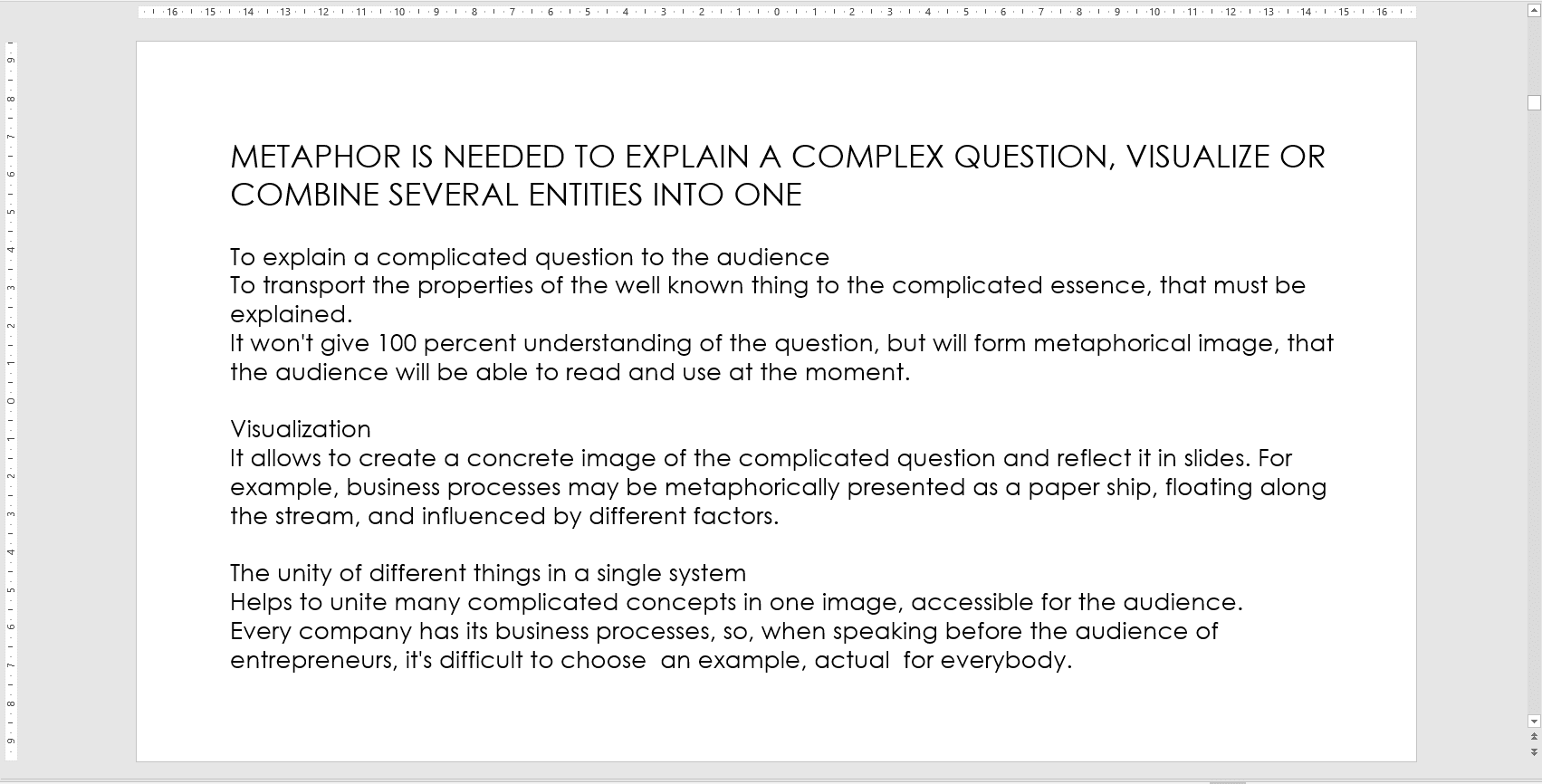
If you plan to write much in a slide, make a long title, that will open the main thing. The audience stops being a hostage. Adverbial title gives a possibility of choice: to read the whole text in the slide or get satisfied with the title.
Step 3:
Make a newspaper block layout
Divide the canvas of the text in blocks, give them subtitles. This will ease the comprehension of the text, it will be easier to move in the text.
We enlarge versions of choice for the audience, again the choice is to read the whole text in the slide, or only the title, or interesting blocks.
We enlarge versions of choice for the audience, again the choice is to read the whole text in the slide, or only the title, or interesting blocks.
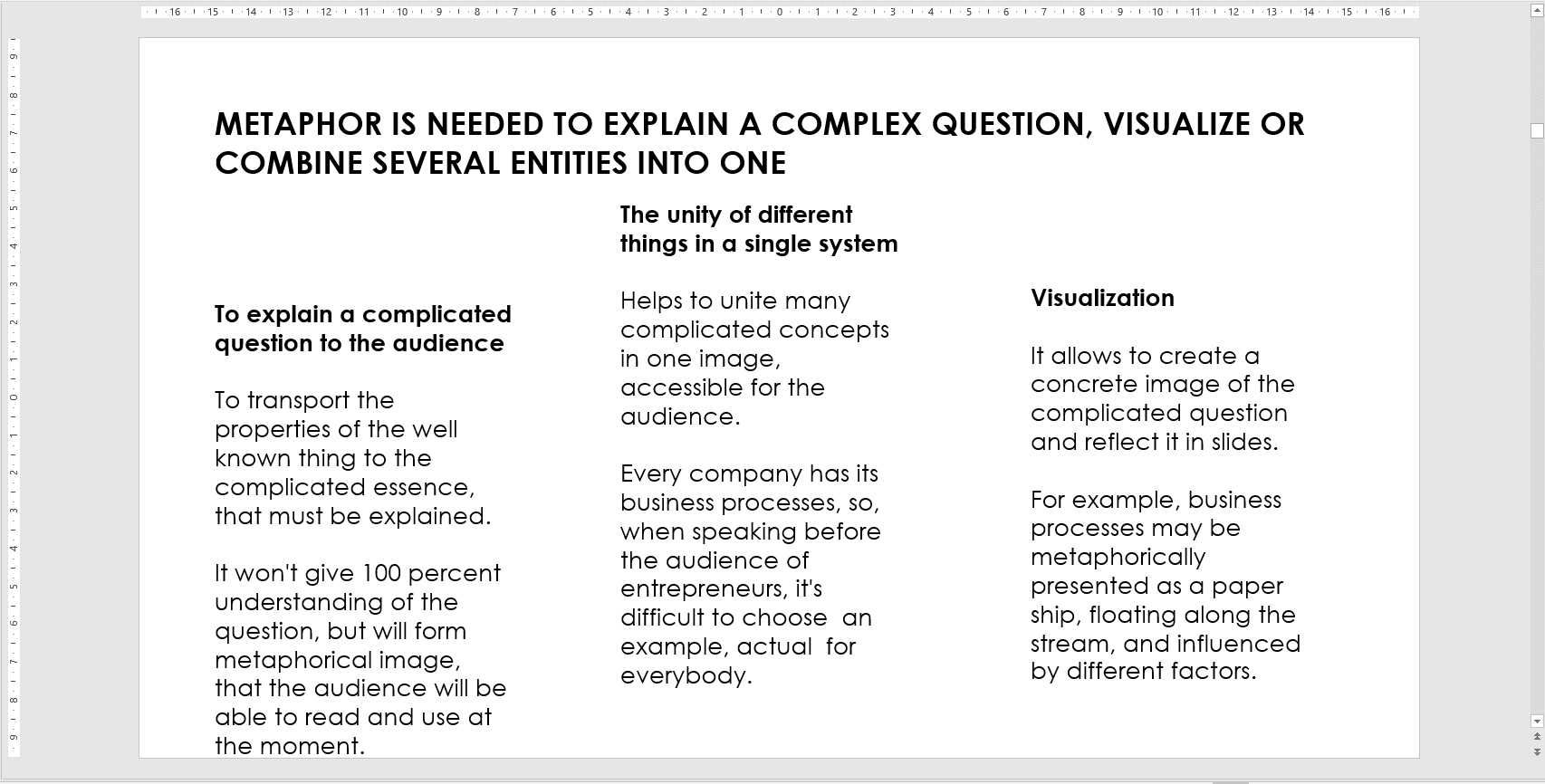
Step 4:
Use the grid lines
In PowerPoint and in Google Slides this function is switched on by the right button of the mouse. After the activation the grid will appear, that only you will see while preparing. It will help to place the blocks precisely and pleasantly for the eye.
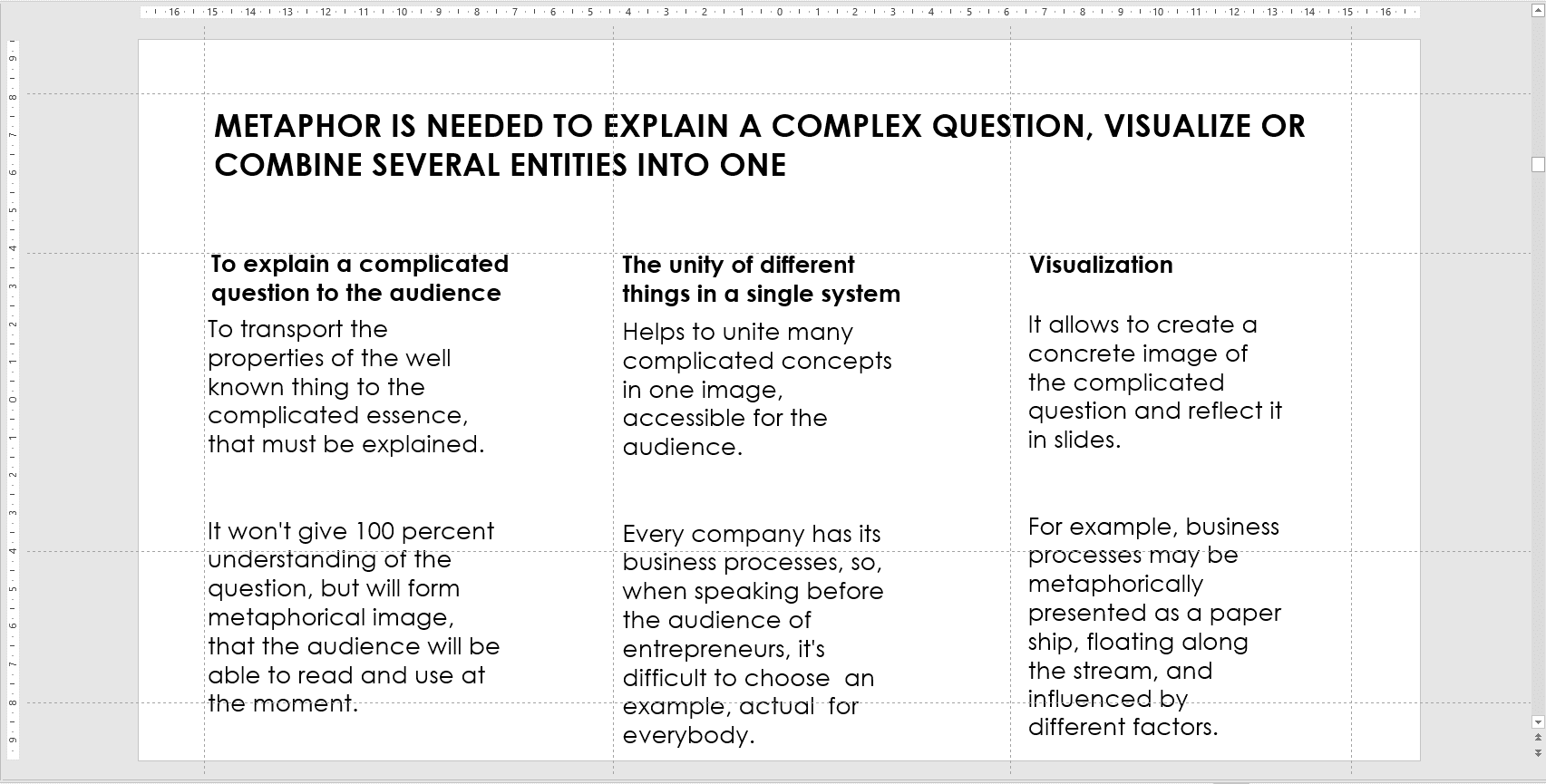
Step 5:
Leave protective fields in the slide
A couple of centimeters from the edge of the slide. For this you may reduce the dimensions of the font or enlarge the text blocks. When presenting in the big screen the main information will not be cut off.
In the protective fields you may place the Company site, logotype or references.
In the protective fields you may place the Company site, logotype or references.
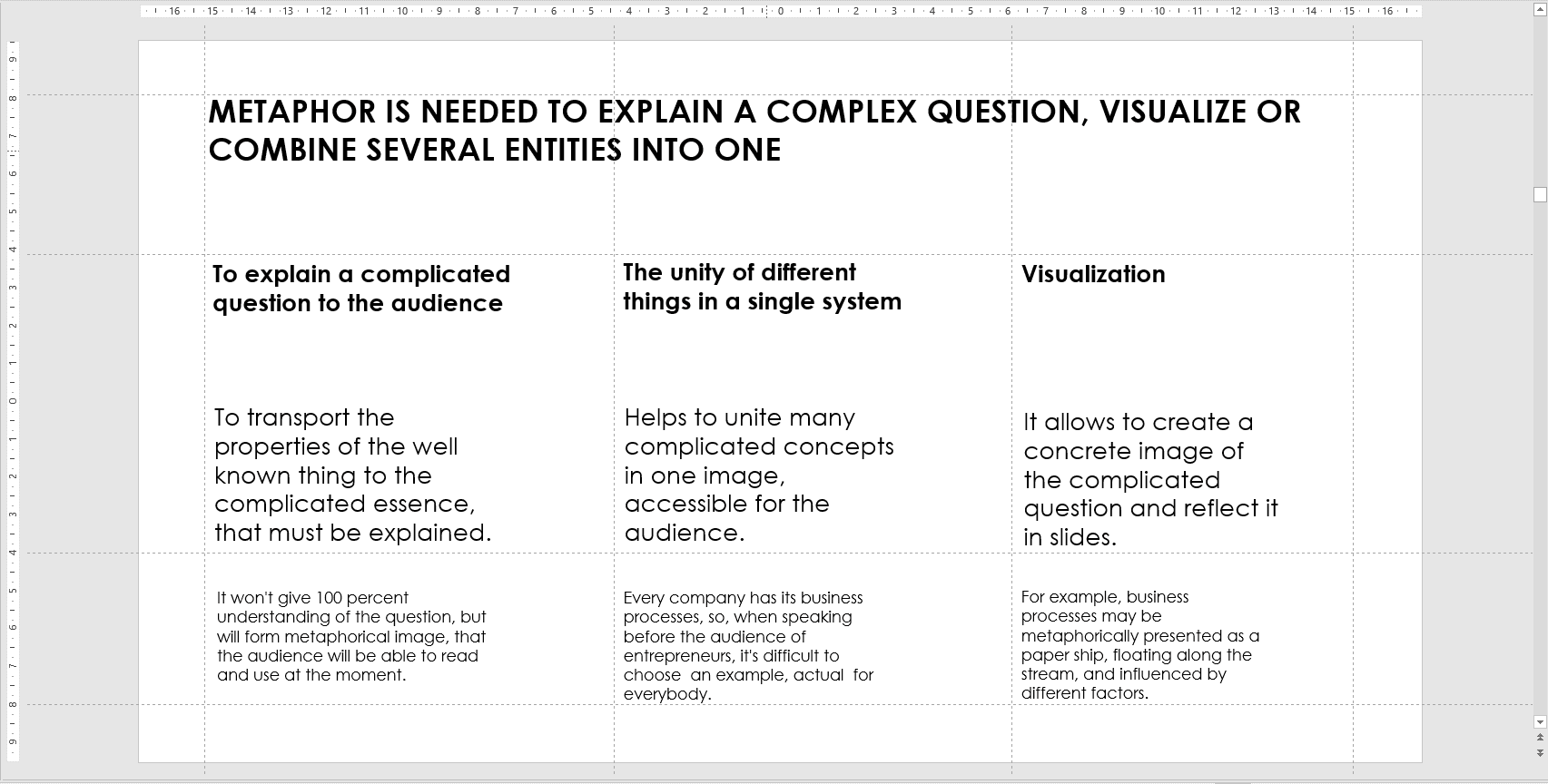
Step 6:
Use the icons
They will ease the comprehension, but the slides are easily edited.
One may also use the colors of the brand or a single common color of the background.
One may also use the colors of the brand or a single common color of the background.
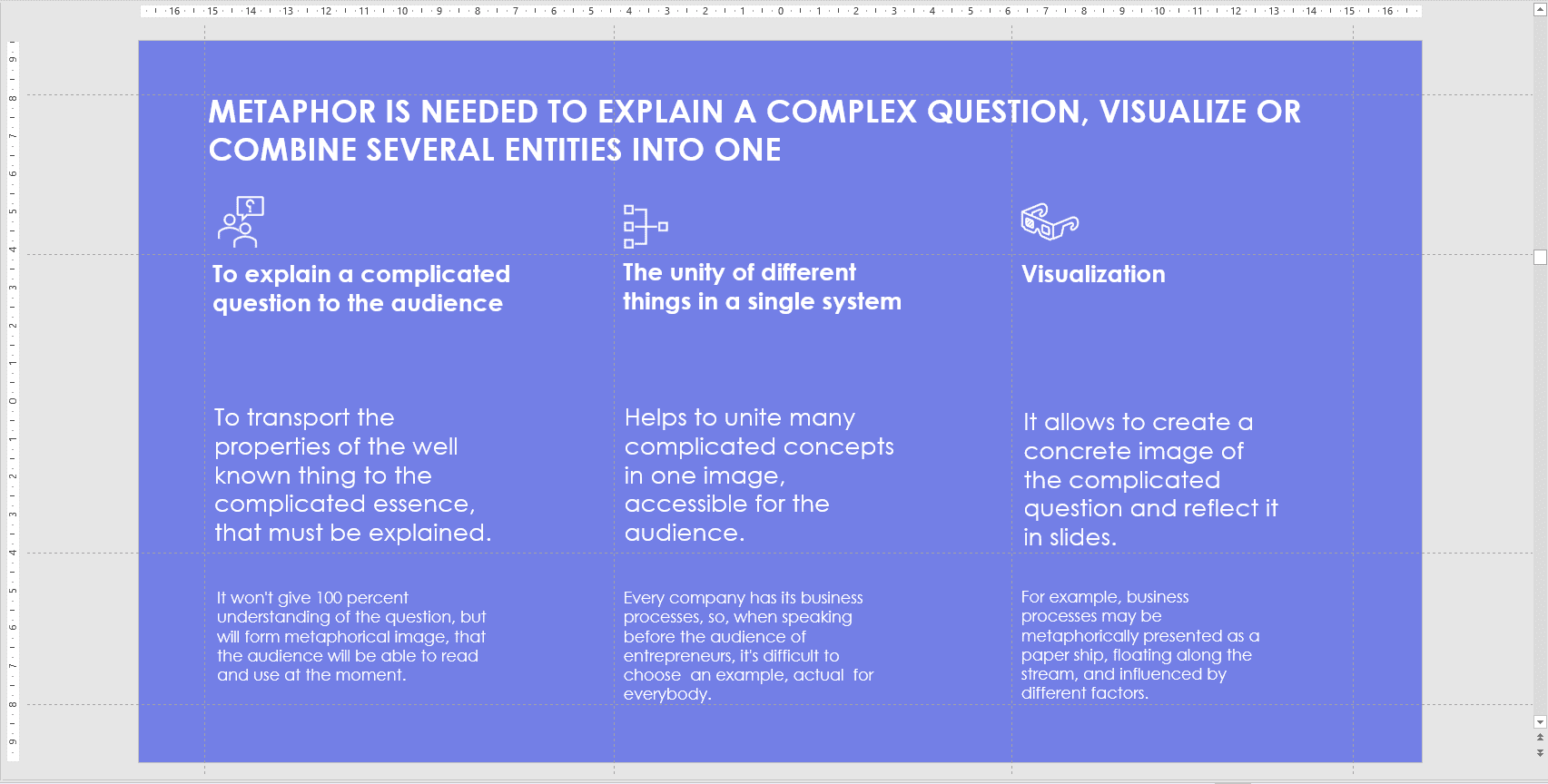
Step 7:
If there is a long list in the slide, its item may spring up gradually
There is no need for motion design skills. One may create several slides that will differ in one element.
In that way you will create a convenient scenario for the audience: the attention of the spectators will be concentrated on a new element.
In that way you will create a convenient scenario for the audience: the attention of the spectators will be concentrated on a new element.
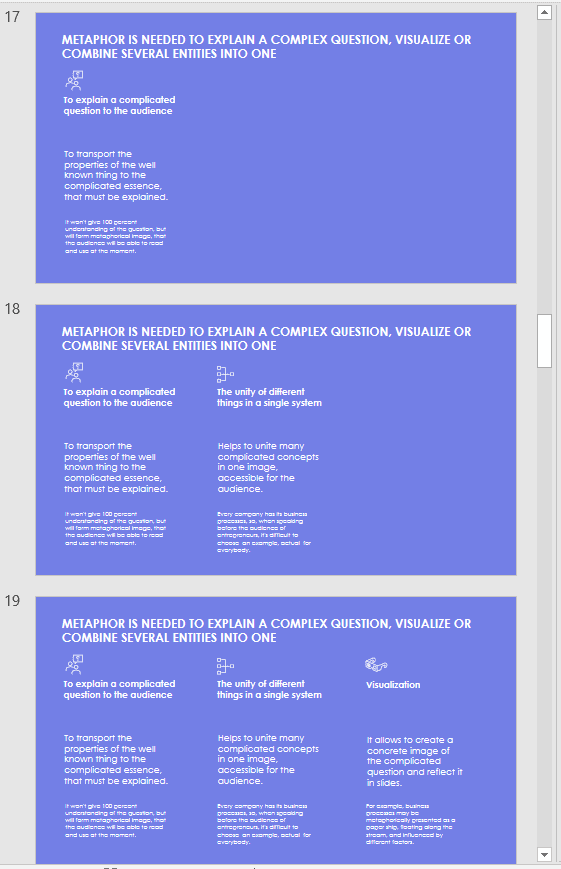
You Face Troubles with the End of Presentation?
Let's Sum Up!
- Divide passages with the blank line
- Understandable thesis titles
- Block layout
- Use the grid lines
- Protective fields
- Icons
- Gradual appearance of information
Don’t scare your audience with slides totally full of text
We will help to improve the situation!

